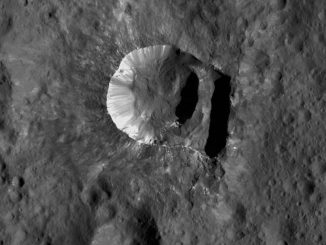Juno’s visible camera had a bird’s-eye view of Jupiter’s four largest moons over the last few weeks, recording the satellites in their orbital ballet around the giant planet as the spacecraft approached from above Jupiter’s north pole.
Io, Europa, Ganymede and Callisto — Jupiter’s four Galilean moons listed from the innermost to outermost — were discovered in 1610 through a homemade telescope by Italian astronomer Galileo Galilei.
Scientists strung together images captured by the JunoCam instrument over 17 days to make the time-lapse movie released early Tuesday, just after Juno slipped into orbit around Jupiter, becoming the second mission to take up residence there.
The volcanic moon Io is the closest of the four large moons to Jupiter, completing a lap around the planet once every 42 hours. Europa is next, harbouring a liquid ocean underneath a frozen outer crust. It circles Jupiter every 85 hours, or three-and-a-half days.
The largest moon in the solar system, Ganymede, is the third Galilean moon from Jupiter. The satellite is larger than Mercury, and orbits its host planet in seven days. The heavily-cratered moon Callisto circles Jupiter once every 17 days, the duration of Juno’s approach movie selected to show all of the Galilean moons completing at least one orbit.
Juno’s arrival at Jupiter on Monday marked the beginning of a 20-month survey, focusing on the gas giant’s deep interior to search for a hypothesized solid core, study the source of its powerful magnetic field, and measure the dynamics of the atmosphere beneath Jupiter’s famous banded cloud tops.
Completing a five-year journey, Juno’s approach over Jupiter’s north pole offered a unique view of the moon system. Previous Jupiter missions orbited or flew by the planet closer to the equator.
Email the author.
Follow Stephen Clark on Twitter: @StephenClark1.



